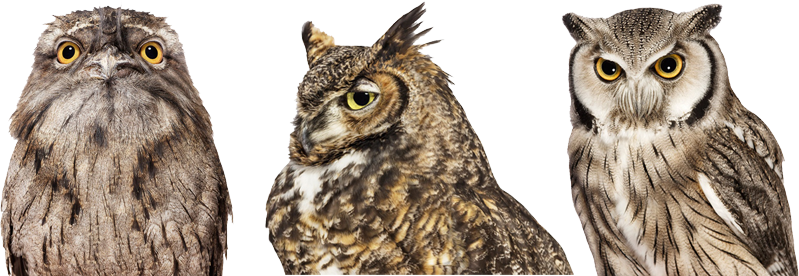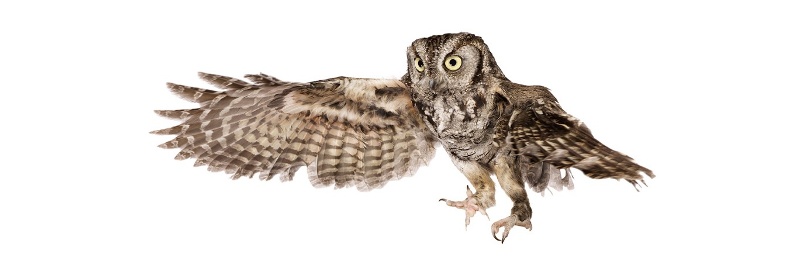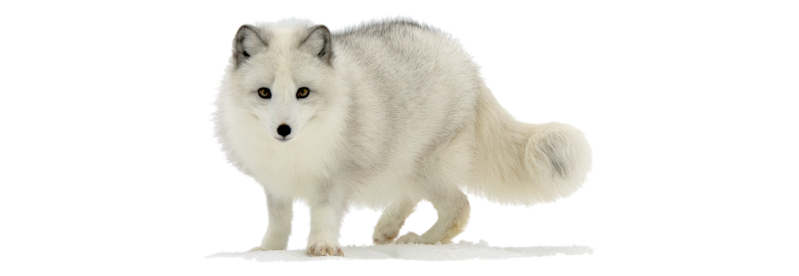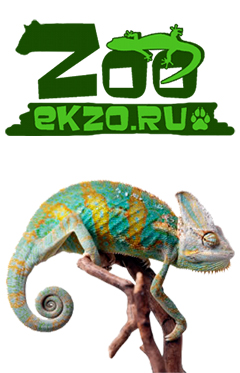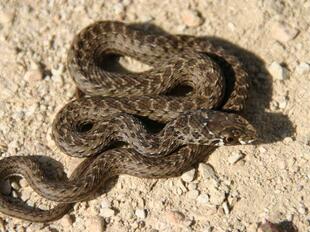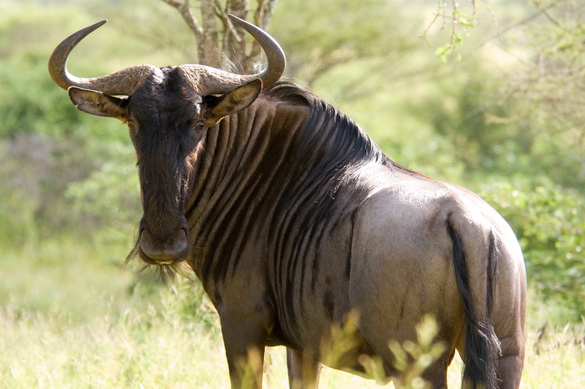
Blue wildebeest(Connochaetes taurinus)
Phylum —chordata
Class — mammalia
Order — artiodactyla
Family — bovidae
Genus – сonnochaetes
Appearance
Blue wildebeests are so called due to the silvery-blue sheen of their fur, which actually varies from greyish to brown. The front feet of the animal exhibit black stripes, due to which this animal is nicknamed the 'brindled gnu'. The front part of its face, the mane as well as the long tail display black coloration. Their beards are long and colored in either black or white, depending on subspecies.
The blue wildebeest exhibits sexual dimorphism, with males being larger and darker than females. The blue wildebeest is typically 170–240 cm (67–94 in) in head-and-body length. The average height of the species is 115–145 cm (45–57 in). While males weigh up to 290 kg (640 lb), females seldom exceed 260 kg (570 lb). A characteristic feature is the long, black tail, which is around 60–100 cm (24–39 in) in length.
Habitat
The natural range of this species occupies eastern and southern Africa. Blue wildebeests are found from Kenya to eastern Namibia and as far south as the Orange River in South Africa.
Behavior
Blue wildebeest are highly social creatures, gathering in one of the largest migratory herds among antelope species. This is basically caused by seasonal shortage of suitable food and water, as a result of harsh climate within their range. These animals constantly travel in search of suitable grass and water. Nevertheless, some individuals of this species prefer living in the same territory throughout the year, where they gather in small social units, consisting of a single alpha male as well as up to 10 adult females with their young. Females of these groups form dominance hierarchy, which is closed for outsiders.
These animals spend the hottest part of the day resting. Periods of increased activity are the morning and late afternoon.
Diet
Blue wildebeests maintain strictly herbivorous diet, generally consuming short grass. These animals require a constant water source and cannot survive for more than a few days without drinking water.
Reproduction
Blue wildebeest exhibit both polygynous and polygynandrous (promiscuous) (both males and females breed with multiple mates) mating systems. The mating season lasts for 3 weeks, occurring just after the rainy season.
Gestation period lasts for 8 months, yielding a single baby, which is capable of standing during the first 15 minutes after birth. The newborn calf will accompany its mother everywhere until 9 months old. By the end of this period, the young wildebeest is weaned, but continues living with its mother until the following breeding season, when a new calf is born. After that, young females remain in their natal herd, while males disperse.
The age of reproductive maturity is 16 months old in females and 2 years old in males.
The average life span is 20 years in the wild, and 21 years in captivity.
In captivity
Wildebeest are easily accustomed to being kept in captivity and breed well.
All year round wildebeest must have access to an open enclosure, they are closed indoors only at night. These antelopes adapt perfectly to cold weather and enter the room during the day only at temperatures below -20°. Unlike most tropical ungulates, wildebeest have the ability to grow a thick warm undercoat and shed profusely in the spring. If they are closed for the winter in a warm room, this leads to a number of health complications – wildebeest are prone to allergies to sawdust, which can cause them to have asthma attacks. For pregnant females, the lack of active movement is fraught with complications during childbirth.
It is necessary to feed the wildebeest twice a day. Hay and branches are placed in outdoor feeders, and juicy feeds (carrots, beets and fruits) are given indoors. In the presence of animals, keepers do not enter the enclosures, because the impulsiveness of these antelopes, combined with sharp horns, make them dangerous in a small confined space.
The young wildebeest are born in captivity every year. The female in labor is not separated from the group. All adult wildebeest in a few minutes come to greet a new member of the group, who in a few days will have fun to jump around the mother.
 Russian
Russian
 English
English








